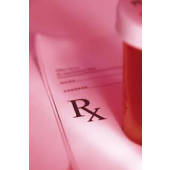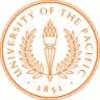Top 75 Pharmacy Schools in the U.S.

 36. Campbell University College of Pharmacy & Health Sciences, Buies Creek, North Carolina
36. Campbell University College of Pharmacy & Health Sciences, Buies Creek, North Carolina
Campbell University opened its doors in 1887 as “Buies Creek Academy” with just 92 students. Today, the school sits on a 850-acre campus and it is home to 6,200 students enrolled in more than 100 degree programs. This includes more than a dozen programs at the Campbell University College of Pharmacy & Health Sciences.
The College of Pharmacy & Health Sciences is home to more than 1,300 students and a faculty of 78. The College offers a wide variety of graduate and undergraduate programs for aspiring pharmacists. Offerings include the Pharm.D., a M.S. in Pharmaceutical Sciences, a B.S. in Pharmaceutical Sciences, and several dual degrees. These include the Pharm.D./MBA, Pharm.D./MSCR, and the Pharm.D./MSPS. The College also offers a Pre-pharmacy program.
Tuition for the Pharm.D. program is $16,200 per semester. M.S. programs are $700 per credit hour, and undergraduate tuition is $16,650 per semester.
 37. University of Wyoming School of Pharmacy, Laramie, Wyoming
37. University of Wyoming School of Pharmacy, Laramie, Wyoming
Established in 1886, the University of Wyoming (UW) is a renowned research institution that offers more than 200 areas of study to nearly 14,000 students from the U.S. and 94 other countries. The school, which sits on a 785-acre campus ranks among the nation's top colleges and universities by U.S. News & World Report, Princeton Review, and Forbes. UW is also listed as a top “Adventure Colleges” by Outside Magazine.
The University of Wyoming houses seven colleges and “multiple interdisciplinary institutes and schools,” including the School of Pharmacy of the College of Health Sciences. Founded in 1946, the University of Wyoming School of Pharmacy is home to 52 students and it offers the Pharm.D. degree and the Pharm.D./MBA.
Tuition for the UW School of Pharmacy is $14,322 for residents (FT - Per Year (12+ Credits/Semester) and $28,908 for non-residents.
 38. Oregon State University College of Pharmacy, Corvallis, Oregon
38. Oregon State University College of Pharmacy, Corvallis, Oregon
Established in 1868, Oregon State University (OSU) is home to more than 26,000 students from 50 states and 89 countries. The school, which sits on a 400-acre campus just 90 miles from Portland, offers more than 280 academic across 12 colleges, 15 Agricultural Experiment Stations, 35 county Extension offices, and the Hatfield Marine Sciences Center in Newport and OSU-Cascades in Bend, Oregon.
Located at the main campus, the Oregon State University College of Pharmacy has been a part of OSU for more than a century. The College offers the Pharm.D., Ph.D. degrees in Pharmaceutical Research and Medical Chemistry Research, a MBA in Executive Leadership for Pharmacy Professionals and Leaders, and a Pre-pharmacy program.
Tuition for the College of Pharmacy is $6,720 per term for Oregon residents and $11,568 per term for non-residents. Tuition for the MBA program is $35,760 per year.
 39. Texas Tech University Health Sciences Center School of Pharmacy, Amarillo, Texas
39. Texas Tech University Health Sciences Center School of Pharmacy, Amarillo, Texas
Texas Tech University began as Texas Technological College back in 1923. The school welcomed its first class of 914 students in 1925. At the time, the school consisted of six buildings. Today, Texas Tech University is “the largest comprehensive higher education institution in the western two-thirds of the state of Texas,” and it is the only campus in Texas that houses a major university, medical school, and law school.
Texas Tech University is home to 32,611 students enrolled in over 200 academic programs across more than 12 colleges and schools.
The Texas Tech University Health Sciences Center is home to the School of Pharmacy. Established in 1969, the School consists of three departments—the Department of Pharmaceutical Sciences, the Department of Biomedical Sciences, and the Department of Immunotherapeutics and Biotechnology. Ranked in the Top 25 for Research Funding among U.S. pharmaceutical research programs, the Texas Tech School of Pharmacy offers the Pharm.D., and a Graduate program in Pharmaceutical Sciences.
Resident tuition for the School of Pharmacy is $8,716.68 for the 2012-2013 school year and $17,140.68 for non-residents.
 40. Wayne State University Eugene Applebaum College of Pharmacy & Health Sciences, Detroit, Michigan
40. Wayne State University Eugene Applebaum College of Pharmacy & Health Sciences, Detroit, Michigan
Established in 1868, Wayne State University is Michigan’s only urban research university. It is one of the largest urban research universities in the country and one of the country’s top three urban research universities. The school, which sits on a 191-acre campus in Detroit's Midtown neighborhood, is home to nearly 30,000 students enrolled in 370 academic programs across 13 colleges and schools.
The Eugene Applebaum College of Pharmacy & Health Sciences dates back to 1891 when it was the Detroit College of Medicine. Today the school consists of three academic departments including Fundamental & Applied Sciences, Health Care Sciences, and Pharmacy. Pharmacy department offerings include the Pharm.D., and M.S. and Ph.D. degrees in Pharmaceutical Sciences with specializations in Medicinal Chemistry, Pharmaceutics, and Pharmacology & Toxicology.
Tuition for the Pharm.D. program is $20,298.70 for residents and $38,789.10 for non-residents. Tuition for the Ph.D. program is $40,600 for residents and $78,856.30 for non-residents. The cost for the M.S. in Pharmaceutical Science is $20,434.30 for residents, and $39,562.30 for non-residents.
 41. Washington State University College of Pharmacy, Pullman-Spokane, Washington
41. Washington State University College of Pharmacy, Pullman-Spokane, Washington
Established in 1890, Washington State University ranks among the nation’s Top 60 public research universities by U.S. News & World Report. The University, which is the state’s original land-grant universities, consists of four traditional campuses and one global campus (online). Campuses include Spokane (48 acres), Tri-Cities (202 acres), Vancouver (351 acres), and the main campus—Pullman (1,742 acres).
WSU is home to 26,000 students enrolled in more than 375 academic programs throughout 11 colleges and the Graduate School. This includes the College of Pharmacy. Washington State University College of Pharmacy conducts classes at both the Pullman and Spokane campuses. Offerings include the Pharm.D., a Ph.D. in Pharmaceutical Sciences (since 1931), and a Pre-Pharmacy program (offered through University College).
Students will spend their first three years at the Pullman campus and the fourth year at the Spokane campus. Tuition for the first three years is $20,512 per year for residents and $37,166 per year for non-residents. Undergraduate tuition for residents is $11,396 per year and $24,478 per year for non-residents.
 42. University of Arkansas College of Pharmacy, Little Rock, Arkansas
42. University of Arkansas College of Pharmacy, Little Rock, Arkansas
Established in 1871, the University or Arkansas is a land-grant college that opened with just eight students and three faculty members. Today, the school is home to nearly 25,000 students from all 50 states and 120 countries. Ranked among the greenest schools in the country, the University of Arkansas sits on a 410-acre campus, and it houses eight colleges and schools.
The University of Arkansas College of Pharmacy was established at the beginning of the 1951-52. It consists of two departments (Pharmacy Practice - Division of Pharmaceutical Evaluation & Policy & Division of Northwest Campus Pharmaceutical Sciences) and it is home to 481 students. Programs include the Pharm.D., and a M.S. and Ph.D. with Tracks in Pharmaceutical Sciences and Pharmaceutical Evaluation & Policy (PEP).
Tuition for the University of Arkansas College of Pharmacy is $14,020 per year for residents and $14,020 per semester for non-residents (full-time). Non-residents carrying nine hours or less will pay $1,402 per semester hour and residents carrying nine hours or less pay $701 per semester hour.
 43. University of Oklahoma College of Pharmacy, Oklahoma City-Tulsa, Oklahoma
43. University of Oklahoma College of Pharmacy, Oklahoma City-Tulsa, Oklahoma
Established in 1890, the University of Oklahoma welcomed its first 100 students by year 1895. Today the school sits on nearly 4,000 acres and it is home to over than 30,000 students enrolled in 150 majors.
The University’s College of Pharmacy was established in 1893. It offers several degree programs including the Pharm.D., and M.S. and Ph.D. degrees with specializations in Pharmaceutics, Pharmacy Administration, Medicinal Chemistry, Nuclear Pharmacy, and Pharmacology and Toxicology. The College also offers the Pharm.D./M.S. dual degree Program.
Tuition for the program is $14,013 for years 1-3 (annual/residents) and $18,262.25 for year 4. Non-resident tuition is $31,441 per year for years 1-3 and $40,555.51 for year 4.
 44. University of Houston College of Pharmacy, Houston, Texas
44. University of Houston College of Pharmacy, Houston, Texas
Founded in 1927, the University of Houston is a public research and teaching institution with a student population of nearly 40,000. The school, which sits on a 667-acre campus, offers nearly 300 undergraduate and graduate programs throughout 12 academic colleges and an interdisciplinary Honors College.
The University of Houston College of Pharmacy was established in 1946. The College offers the Pharm.D., M.S. and Ph.D. degrees in Pharmacy Administration, a Ph.D. in Pharmacology or Pharmaceutics, a combined Pharm.D./Ph.D. in Pharmacology or Pharmaceutics, and a combined Pharm.D./M.S.
Tuition for resident Pharmacy students (M.S./Ph.D.) is $423 per credit hour. Non-resident tuition is $777 per credit hour. Resident Pharm.D. students pay $552 per credit hour and non-residents pay $906 per credit hour.
 45. University of the Pacific Thomas J. Long School of Pharmacy and Health Sciences, Stockton, California
45. University of the Pacific Thomas J. Long School of Pharmacy and Health Sciences, Stockton, California
University of the Pacific was established in 1851. The school is nationally ranked and features a 175-acre main campus that houses 7,000 students. The school has three campuses (Stockton/main campus, Sacramento, and San Francisco) and it offers more than 80 majors and programs of study. Among them is the Pharmacy Program.
The University of the Pacific Thomas J. Long School of Pharmacy and Health Sciences was awarded full accreditation by the Accreditation Council for Pharmacy Education (ACPE) in 1959. The first graduating class consisted of just 16 students. Today, the School welcomes hundreds of students each year.
The Thomas J. Long School of Pharmacy and Health Sciences offers several degree and joint degree programs for aspiring pharmacists. Offerings include the Pharm.D., a Ph.D. in Physical Therapy, M.S. degrees in Pharmaceutical Chemical Sciences and Industrial Pharmaceutics, and a Ph.D. in Pharmaceutical Chemical Sciences. Joint degree programs include the Pharm.D./MBA, Pharm.D./Ph.D., and Pharm.D./M.S.
Tuition for the Pharm.D. program is $57,975 per year for years 1 and 2 (3 trimesters each) and $38,650 for the third year (2 trimesters). Tuition for the Pharm.D. program is $57,975 per year for years 1 and 2 (3 trimesters each) and $38,650 for the third year (2 trimesters). The tuition for other pharmacy programs is $21,085 per semester/term (16-18 units).
Pages

- Facebook Like
- Google Plus One
- 745215 reads


